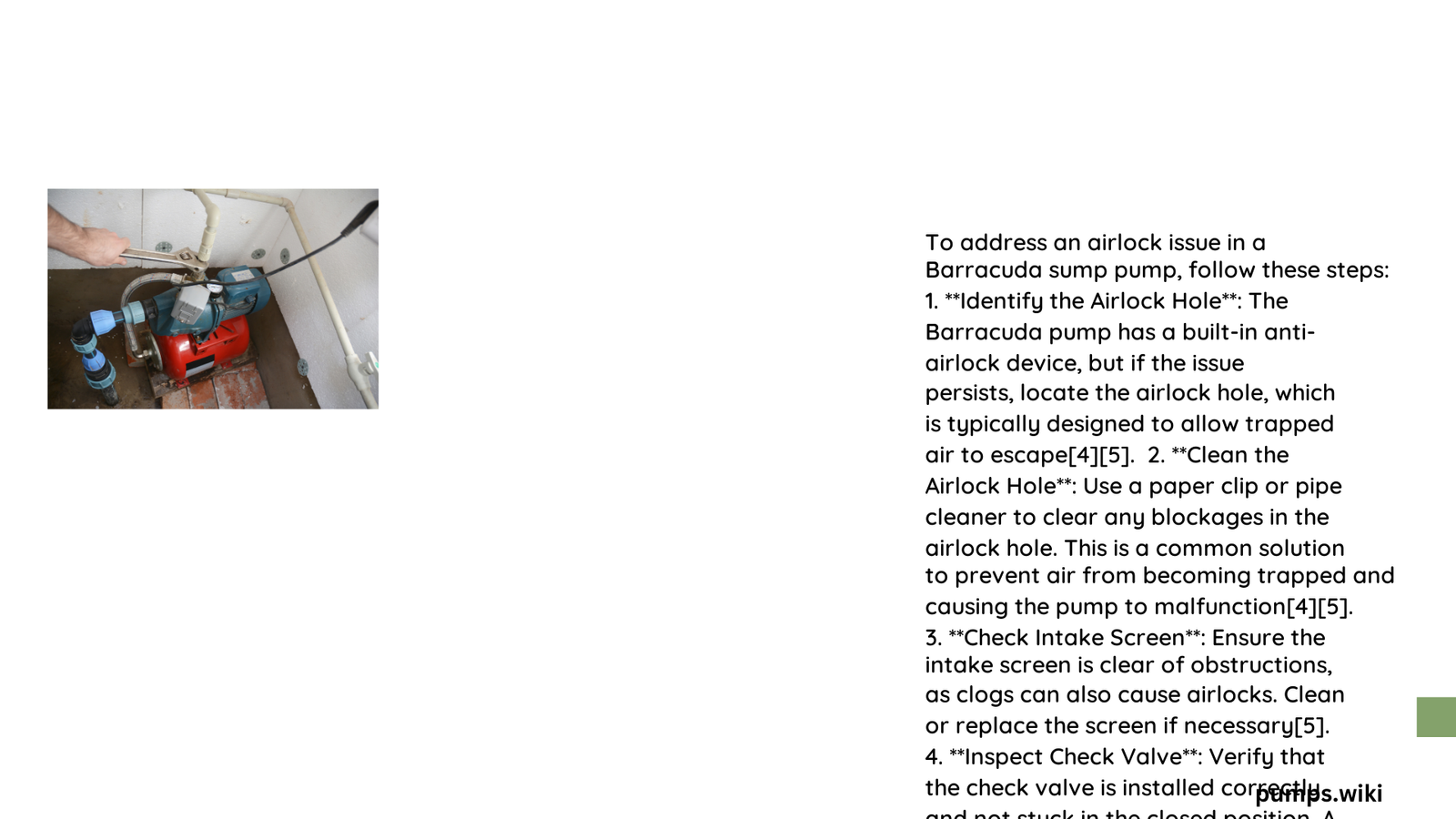Barracuda sump pump airlock holes can significantly disrupt water drainage systems, causing potential flooding and equipment malfunction. Understanding the intricate mechanics of these critical components is essential for homeowners seeking to maintain efficient water management. This comprehensive guide explores the complex dynamics of airlock formation, offering precise diagnostic techniques and practical resolution strategies for Barracuda sump pump systems.
What Causes Airlock in Barracuda Sump Pumps?
Airlocks represent a complex hydraulic phenomenon that can immobilize your sump pump’s functionality. Several critical factors contribute to this challenging mechanical issue:
How Does Trapped Air Develop?
- Vertical Discharge Challenges
- Excessive vertical lift distances
- Improper pipe angle configurations
-
Rapid water influx scenarios
-
Mechanical Obstruction Factors
- Debris accumulation in discharge pipes
- Compromised check valve performance
- Inadequate system ventilation
What Are the Primary Airlock Mechanisms?
| Mechanism | Description | Potential Impact |
|---|---|---|
| Pressure Differential | Air bubbles blocking water flow | Complete pump paralysis |
| Gravitational Resistance | Upward water movement impediment | Reduced pumping efficiency |
| Thermal Expansion | Temperature-induced air pocket formation | Intermittent operational failures |
How to Diagnose Barracuda Sump Pump Airlock?

What Are the Diagnostic Symptoms?
- Pump motor running without water discharge
- Unusual humming or vibrating sounds
- Inconsistent water removal patterns
- Visible air bubbles in discharge stream
What Tools Are Needed for Diagnosis?
- Multimeter
- Flashlight
- Thin wire or paperclip
- Pipe wrench
- Protective gloves
How to Resolve Airlock in Barracuda Sump Pump?
What Are the Step-by-Step Resolution Techniques?
- Power Disconnection
- Unplug electrical connection
-
Ensure complete system isolation
-
Anti-Airlock Hole Inspection
- Locate small ventilation hole
- Clean using thin wire
-
Remove potential debris blockages
-
Discharge Pipe Evaluation
- Check pipe alignment
- Verify check valve functionality
- Inspect for potential obstructions
What Preventive Maintenance Strategies Work?
- Regular quarterly system inspections
- Annual professional pump evaluation
- Maintaining clean sump pit environment
- Installing additional ventilation mechanisms
What Are Advanced Troubleshooting Techniques?
How to Address Complex Airlock Scenarios?
- Implement weep hole drilling technique
- Consider professional hydraulic system assessment
- Evaluate pump capacity versus discharge requirements
- Analyze environmental installation factors
What Are Potential Replacement Considerations?
When Should You Replace Your Sump Pump?
- Persistent airlock issues
- Age exceeding 7-10 years
- Frequent mechanical failures
- Reduced pumping efficiency
Technical Specifications and Recommendations
What Are Optimal Operating Parameters?
- Temperature Range: 32°F to 120°F
- Maximum Vertical Lift: 25 feet
- Recommended Maintenance: Bi-annual inspection
- Ideal Discharge Pipe Angle: 45-degree gradient
Conclusion
Effective management of Barracuda sump pump airlock holes requires systematic approach, technical understanding, and proactive maintenance strategies. By implementing these comprehensive techniques, homeowners can ensure reliable water management and prevent potential flooding risks.
